I HAVE KEPT these copies from a whole impressive book, written in the thirties. In Puerto Rico, woods of native/endemic nature, are always mentioned around the theme of musical instruments or handcrafted souvenirs only. When I find the reference I will mention it. This may be of interest to some readers...
PORTO RICO AND HAITI
THE INFLUENCE OF
THE UNITED
STATES
THE INFLUENCE OF
THE UNITED
STATES
THE TWO Caribbean islands of Porto Rico and Haiti will never be destined to play an important
role as timber producing countries. So far as forest exports go, both countries are negligible, but
they do possess importance as constituting in Caribbean countries the sole examples of forestry
carried on by the United States foresters. Probably Porto Rico has received the most direct influence from forestry thought and practice in the United States, since foresters for that island have all been men whose early training lay on the National Forests of the United States. The present Forester, in addition to his duties as Insular Forester, is supervisor over a tract of federal
land which is one of the chain of National Forests, and as such is a member of the United States Forest Service.
The Republic of Haiti, on the other hand, not being a possession of the United States, has no direct official connection through its forestry channels with the central United States Forest Service, but foresters of Haiti have been United States foresters, trained and experienced in United States methods.
But there exists between these countries and the United States, and between the countries themselves, no such unifying influence as exists between the British possessions and the mother country.
Porto Rico today is almost entirely an agricultural country, and as a result of past widespread
devastation to her tropical forests she has forced to import practically all the lumber consumed.
During 1927 alone she imported from the United States logs and timber valued at over $135,000,
and other forms of wood and furniture valued at an additional $2,000,000. Each year the island
consumes more than five times as much wood as her forests produce, although the average consumption of solid wood in Porto Rico for purely domestic purposes is only about ten cubic
feet per person.
When first discovered by the Spaniards Porto Rico was probably densely covered with forest
growth from coast to coast to mountain top. It was a forest rich in species and high in content of
precious woods. But the history of the island is a repetition of the forest history of every country
covered by dense populations over a long period of time. Three hundred years of practically unrestricted exploitation have reduced the forest area of Porto Rico to a small remmant of what
it once was and profoundly changed the character and composition of its forests. Its valuable spercies have been culled from the more accesible areas and only the more useless timber is allowed to remain and to reproduce. As consequence of all this, Porto Rico suffers the most acute wood famine ever experienced by any country in this hemisphere. Lumbering and the many woodworking industries deriving their raw materials from the forest have disappeared from the economic life of the country. The island is now almost entirely dependent upon importations of lumber, construction timbers, and other forest products.
Probably fifty percent of Porto Rico or 1,000,000 acres, may be classified as true forest soil,
fut of all this only 110,000 acres still remain uncut. Eighty percent has been devastated.
Along her coasts Porto Rico has a tidewater forest fringe composed of three species of mangrove.
The Insular Government has acquired 25,000 acres of this mangrove forest which, under
management on a sustained yield basis, yields a yearly income of eight to ten thousand dollars from sales.
Mangrove is a rapid grower, and reaches its financial maturity in about ten years, when it averages about forty to fifty cords to the acre. The present method is to clear cut about one tenth of the area annually, thus dividing the forest into ten cutting compartments, each to be exploited once in a decade. From the standpoint of financial returns the mangrove area is probably the most important on the island.
role as timber producing countries. So far as forest exports go, both countries are negligible, but
they do possess importance as constituting in Caribbean countries the sole examples of forestry
carried on by the United States foresters. Probably Porto Rico has received the most direct influence from forestry thought and practice in the United States, since foresters for that island have all been men whose early training lay on the National Forests of the United States. The present Forester, in addition to his duties as Insular Forester, is supervisor over a tract of federal
land which is one of the chain of National Forests, and as such is a member of the United States Forest Service.
The Republic of Haiti, on the other hand, not being a possession of the United States, has no direct official connection through its forestry channels with the central United States Forest Service, but foresters of Haiti have been United States foresters, trained and experienced in United States methods.
But there exists between these countries and the United States, and between the countries themselves, no such unifying influence as exists between the British possessions and the mother country.
Porto Rico today is almost entirely an agricultural country, and as a result of past widespread
devastation to her tropical forests she has forced to import practically all the lumber consumed.
During 1927 alone she imported from the United States logs and timber valued at over $135,000,
and other forms of wood and furniture valued at an additional $2,000,000. Each year the island
consumes more than five times as much wood as her forests produce, although the average consumption of solid wood in Porto Rico for purely domestic purposes is only about ten cubic
feet per person.
When first discovered by the Spaniards Porto Rico was probably densely covered with forest
growth from coast to coast to mountain top. It was a forest rich in species and high in content of
precious woods. But the history of the island is a repetition of the forest history of every country
covered by dense populations over a long period of time. Three hundred years of practically unrestricted exploitation have reduced the forest area of Porto Rico to a small remmant of what
it once was and profoundly changed the character and composition of its forests. Its valuable spercies have been culled from the more accesible areas and only the more useless timber is allowed to remain and to reproduce. As consequence of all this, Porto Rico suffers the most acute wood famine ever experienced by any country in this hemisphere. Lumbering and the many woodworking industries deriving their raw materials from the forest have disappeared from the economic life of the country. The island is now almost entirely dependent upon importations of lumber, construction timbers, and other forest products.
Probably fifty percent of Porto Rico or 1,000,000 acres, may be classified as true forest soil,
fut of all this only 110,000 acres still remain uncut. Eighty percent has been devastated.
Along her coasts Porto Rico has a tidewater forest fringe composed of three species of mangrove.
The Insular Government has acquired 25,000 acres of this mangrove forest which, under
management on a sustained yield basis, yields a yearly income of eight to ten thousand dollars from sales.
Mangrove is a rapid grower, and reaches its financial maturity in about ten years, when it averages about forty to fifty cords to the acre. The present method is to clear cut about one tenth of the area annually, thus dividing the forest into ten cutting compartments, each to be exploited once in a decade. From the standpoint of financial returns the mangrove area is probably the most important on the island.
This as a tribute of
affection to
ROBERTO SERRANO SELVA
CASTORA LOZANO Y BERRUEZO
JOSE GONZALEZ BARJA
JOSE LUIS GONZALEZ
HECTOR TATO DAVILA
HUMBERTO LOPEZ MORALES
GARY BOUDRAU
FELIX CORDOVA DIAZ
TEACHERS BEYOND THE CLASSROOM
affection to
ROBERTO SERRANO SELVA
CASTORA LOZANO Y BERRUEZO
JOSE GONZALEZ BARJA
JOSE LUIS GONZALEZ
HECTOR TATO DAVILA
HUMBERTO LOPEZ MORALES
GARY BOUDRAU
FELIX CORDOVA DIAZ
TEACHERS BEYOND THE CLASSROOM


















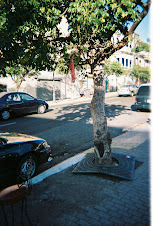-25.jpg)
-24.jpg)
























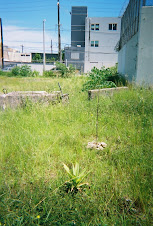




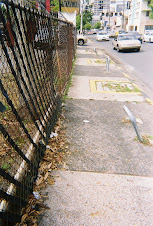
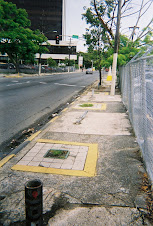
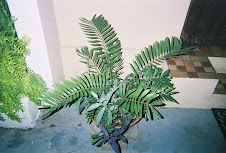




-22.jpg)
-25.jpg)
-24.jpg)






-16.jpg)
-13.jpg)
-08.jpg)
































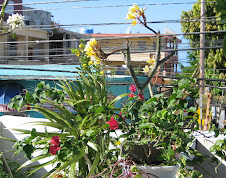
















No hay comentarios:
Publicar un comentario